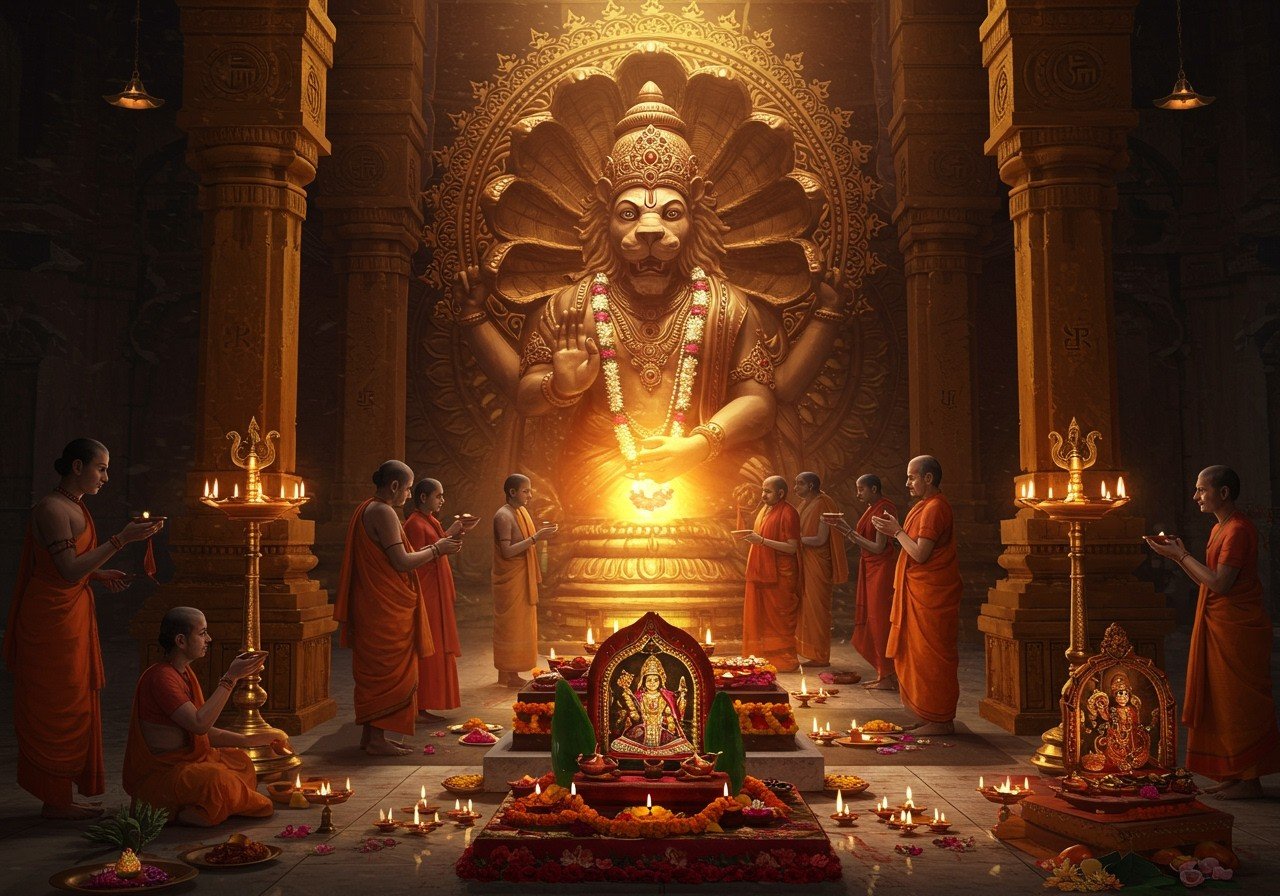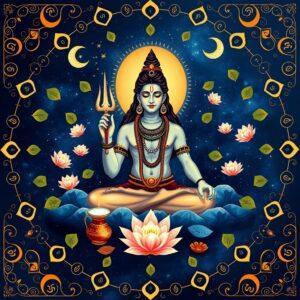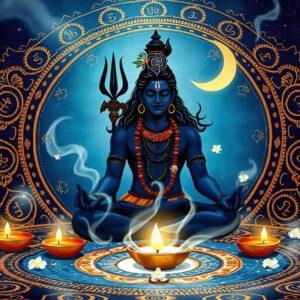
Narasimha Jayanti is a significant Hindu festival celebrated to honor the fourth incarnation of Lord Vishnu, Narasimha, depicted as half-lion and half-man. This festival is observed with various rituals and customs that hold deep spiritual meaning for devotees. Understanding the background and significance of Narasimha Jayanti is crucial for a complete appreciation of this celebration.
Historical and Mythological Background
Narasimha is a revered avatar in Hindu mythology. The story revolves around the demon king Hiranyakashipu, who obtained a boon granting him near invincibility. His son, Prahlada, however, was a devoted follower of Lord Vishnu. When Hiranyakashipu attempted to harm Prahlada for his devotion, Lord Vishnu appeared as Narasimha, emerging from a pillar at twilight (neither day nor night), to protect Prahlada and vanquish Hiranyakashipu, who was killed on the threshold of a courtyard (neither indoors nor outdoors), with Lord Narasimha’s claws (neither a handheld weapon nor a launched missile). This unique avatar emphasizes divine intervention, justice, and the upholding of dharma. You can explore more about Lord Ganesha and other deities in our blog post: The Many Forms of Lord Ganesha: Exploring His Divine Avatars.
Significance of Narasimha Jayanti
Narasimha Jayanti symbolizes the victory of good over evil and divine protection for devotees. Celebrated with great fervor across India, it highlights faith, righteousness, and God’s omnipresence. The teachings of Narasimha remain relevant, promoting faith and moral integrity. Learn more about the significance of rituals in our blog: Unveiling the Profound Significance of Aarti: A Journey Beyond the Flickering Flame.
Rituals and Customs
Devotees observe several rituals during Narasimha Jayanti:
- Early Morning Bath (Mangal Snan): A purifying ritual to prepare for the day’s observances. Devotees cleanse themselves before engaging in prayers and puja.
- Fasting (Upavasa): A common practice to demonstrate devotion and seek blessings. Some devotees observe a partial fast, while others maintain a complete fast throughout the day.
- Narasimha Puja: The main ritual involves offering flowers, incense, and holy water to Lord Narasimha. Devotees may also offer fruits, sweets, and other traditional items.
- Chanting Mantras: Reciting the ‘Narasimha Kavacham’ is believed to offer protection from negative energies and seek blessings. Other mantras dedicated to Lord Narasimha are also chanted.
- Temple Visits: Devotees visit temples to participate in aartis, bhajans, and special prayers conducted on Narasimha Jayanti. This is a time for community gathering and spiritual reflection.
- Distribution of Prasadam: Sharing blessed food (prasadam) with family, friends, and the needy is an integral part of the celebrations. It symbolizes sharing blessings and spreading joy.
Regional variations add unique customs to these core rituals, enriching the celebration’s diversity.
Online Shopping for Ritual Items
For your convenience, poojn.in offers a wide selection of authentic puja items online. Easily find traditional items like turmeric, kumkum, ghee, incense sticks, and flowers. We also offer specific items such as Narasimha idols, puja thalis, and holy scriptures. Choosing a trusted online store like poojn.in ensures high-quality products and timely delivery for a seamless celebration.
Regional Celebrations and Community Involvement
Narasimha Jayanti is celebrated uniquely across India. Andhra Pradesh, particularly Ahobilam, is known for its grand celebrations. Other states like Karnataka, Tamil Nadu, and Maharashtra have distinct traditions. Community gatherings and cultural programs are central to the festivities, with temples organizing processions, dramas, and lectures on Narasimha’s life and teachings. Active participation by children and youth fosters community spirit and preserves cultural heritage. You can find more about Laddu Gopal and related traditions in our blog: A Complete Guide to Laddu Gopal: 10 Essential Facts You Need to Know.
Conclusion
Narasimha Jayanti serves as a potent reminder of the triumph of good over evil and the importance of steadfast faith. Celebrating this festival with devotion strengthens our connection to our rich cultural heritage. Understanding the mythological background and performing rituals with sincerity allows us to honor Lord Narasimha’s divine protection and justice. May this Narasimha Jayanti bring blessings, protection, and strength to you and your loved ones.
FAQs about Narasimha Jayanti Celebrations – Rituals and Significance
What is Narasimha Jayanti? Narasimha Jayanti commemorates the birth of Lord Narasimha, the fourth incarnation of Lord Vishnu, who appeared as half-lion, half-man to protect his devotee Prahlada. It is a significant festival in Hindu tradition.
When is Narasimha Jayanti celebrated? Narasimha Jayanti is observed on the 14th day of the Shukla Paksha (bright fortnight) in the month of Vaishakha, typically falling in April or May. As per the reference sources, Narasimha Jayanti was celebrated on May 11, 2025.
What are the main rituals? Key rituals include fasting, temple visits, reciting hymns and prayers (like the Narasimha Kavacha and Stotra), and performing special pujas, sometimes including the Abhishekam ritual.
Why do people fast? Fasting is believed to purify the mind and body, demonstrating devotion to Lord Narasimha and seeking his blessings.
How is the puja performed? The puja involves offering flowers, fruits, sweets, lighting lamps, chanting mantras, and singing devotional songs to Lord Narasimha’s idol.
Can children participate? Absolutely! Children can join prayers, sing hymns, and help decorate the puja area, learning about the festival’s significance.
What is the significance of Lord Narasimha’s appearance? Lord Narasimha’s appearance signifies the victory of good over evil and divine protection of the righteous, as demonstrated by his rescue of Prahlada.
Are there specific foods prepared? Sattvic foods (excluding onions and garlic) are usually prepared, including sweets and dishes like panakam and vada, which are offered to the deity.


